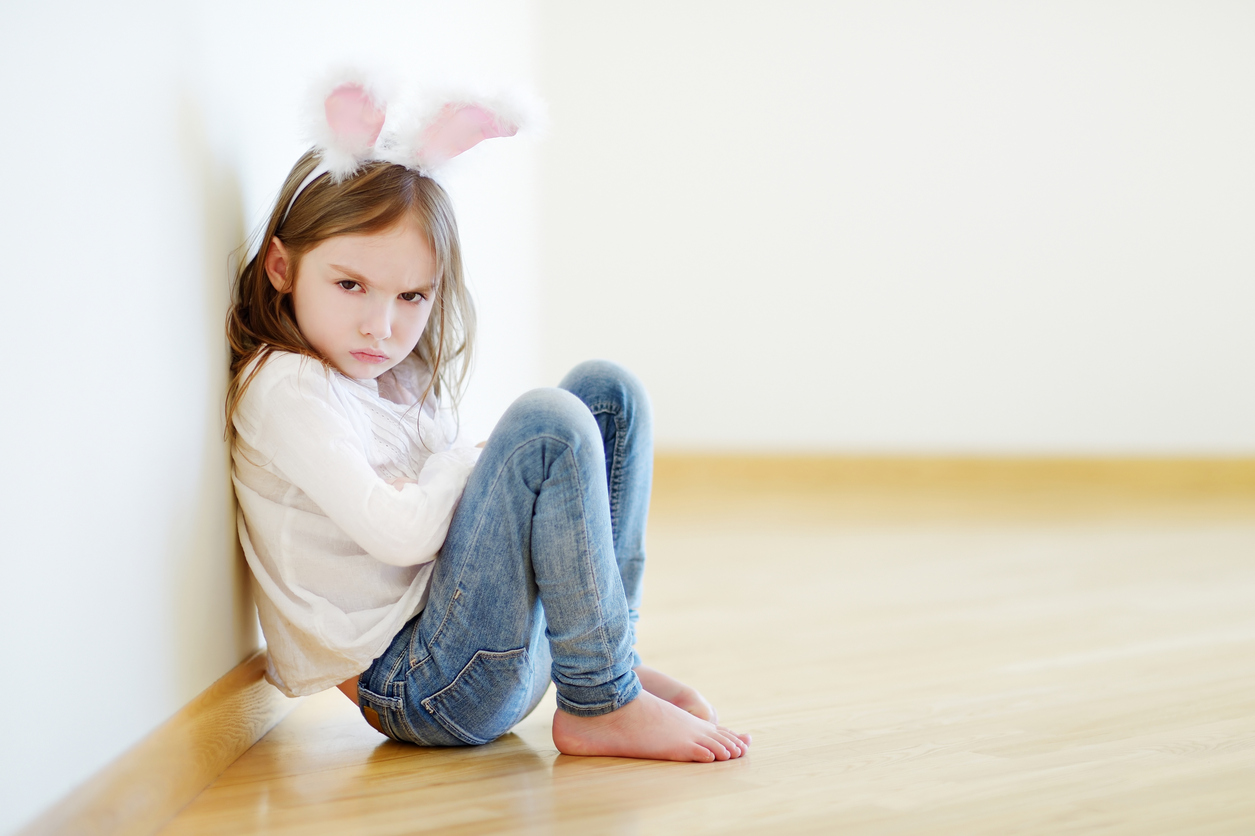Are you in the middle of the toddler terrible twos? Is “NO!” the new battle cry of your darling child?
We feel for you! All that stubbornness can be SUPER frustrating.
And while it might be difficult to do when you’re in the middle of a power struggle, try not to view “no” as defiance.
Instead, think of it as a natural part of your child developing their independence. Sounds better, right?
Plus we share some helpful strategies you can use to show your kids less destructive ways to express their will. Ways that won’t leave you frazzled and frustrated.
It all comes down to feelings of connectedness.
If you can connect with your child, give them options so they don’t feel powerless, and reward them for ‘helping’ rather than saying no…you’ll be surprised at how much more willing they are to get with the program.
Toddler Terrible Twos: The No! Phase
Does this sound at all familiar to you?
Mom: “Put your toys away.”
Toddler: “No!”
Mom: “Please? It’s time to go now, let’s pick up these toys.”
Toddler: “No! No! No!”
And the battle of wills goes on and on…
This phase, affectionately known as the toddler terrible twos, is a right of passage. And it can be really challenging to parent an oppositional child that is resistant to your direction.
But keep in mind that the “no phase”, while extremely frustrating, is also normal toddler behavior. Many kids go through this stage.
Heck, it can even resurface in grade school and adolescence too.
Related: How To Stop Toddler Biting
The good news? You CAN get through this!
First, it’s important to have an understanding of what causes oppositional behavior in the first place.
Then the key to dealing with the terrible twos is to have a little patience and a willingness to try a variety of techniques until you find the one that works best for your child.
Wondering where to start? We’ve got your covered.
Read on to learn the whys and hows of dealing with a child that just says no.
Where “NO!” Comes From
One good way to explain resistance is to explain what is isn’t. You may hear your toddler saying no and think that they are being strong-willed, defiant or manipulative, but that isn’t really the case.
This type of resistance is more instinctual than stubborn, which is why psychologists prefer to call it counter-will.
Once you understand that counter-will is a healthy developmental tool for your child, it can help you look at resistance from a new perspective.
In other words, the toddler terrible twos aren’t all bad.
Related: How To Get Kids To Listen and Follow Instructions
The bond between a parent and child is the most important factor in a child’s development.
There will be times when your toddler might not feel this connection in a particular moment. This is really frightening to them!
Then add to this the fact that children aren’t wired to take direction from someone to whom they feel no attachment. You can start to see where the frequent NOs come from.
This is mostly a good thing, because having your child say no to a stranger is a safety mechanism.
But in those moments when it’s YOU they don’t feel attached to, their counter-will kicks in and you get a defiant toddler terrible two “No!” instead.
When a child doesn’t feel connected to a parent, they treat you the same way they’d treat a stranger.
Counter-will serves another important purpose. It helps kids express their individuality and independence.
This is why you tend to hear a lot more “No!” during the toddler and preschool years. Kids are just beginning to realize they can assert themselves.
Saying no is less about your child refusing to do something, and more about being able to exert control over a situation they would otherwise feel powerless about.
The “Nos” that accompany the toddler terrible twos are your child’s way of controlling a situation and building confidence.
Makes it a little less frustrating, doesn’t it?

Dealing With The Terrible Twos
You will never fully get rid of resistance in your child and the truth is, you wouldn’t want to. There are times when asserting oneself is a good thing!
What you want to do instead is make counter-will more manageable and less disruptive. You also want to cut back on toddler tantrums.
Remember counter-will usually stems from a child not feeling connected to you, so creating more disconnection through yelling or punishment is only going to make matters worse.
Instead, take a deep breath and try one or all of the following 6 techniques that can help with terrible twos and get your child back on track.
1. Check Yourself First:
How many times a day do you say no? Be honest.
We’re not suggesting you start letting your kids do whatever they want, but try being more conscious and selective with your language. The toddler terrible twos may be a case of them copying you.
Related: Top 12 Ways To Improve Your Parenting Skills
Instead of saying “no!” when your kids ask for a cookie, try saying “you know we don’t have sweets before dinner. You can have one after you finish your meal.”
They less no they hear, the less no they will mimic.
2. Connect Before You Direct:
Before trying to tell your child what to do, first try rebuilding the attachment between you.
Use eye contact, focus your attention on them, touch or talk to them.
Reestablishing a feeling of connection between you and your child will start to dial back their resistance.
3. Offer Choices:
Help your child find more productive ways of exercising their will (other than saying no) by letting them make some of the decisions.
Instead of telling them to go to bed (a yes/no proposition) ask them what they’d rather do first…brush their teeth or put on pajamas.
This makes your child feel less powerless and you have less chance of your toddler saying no.
4. Ask For Their Help:
Kids of all ages will often say no to tasks they don’t want or like to do. But if you appeal to the side of them that wants to please you and make you happy, you’ve got a much better chance of seeing results.
“It would make me so happy if you would pick your clothes up off the floor” or “It would be such a big help if you would unload the dishwasher”.
Related: Best Parenting Advice – 8 Tips Straight From Moms
Framing it this way makes kids feel appreciated and the task seems less like a chore.
It’s a good trick for sidestepping a typical toddler terrible twos response.
5. Show Empathy:
When your child is engaged in a fun activity, like playing a game or taking a bath, it’s easy to see why they might not want to transition to different task.
Transitions between activities are when you’ll often notice an uptick in the number of “NOs”.
Show your child you understand, and help them see why it makes sense to stop.
“I know you’re having fun playing ball, but if you stop now we can get ready to go to grandmas house. She is waiting for us.”
6. Don’t Take It Personally:
It’s really not about you, it’s about your child developing their confidence and independence (which is a good thing in the long run).
Just be patient, as with most developmental stages the toddler terrible twos will get better.
So take a deep breath, and try some or all of the strategies above.
And remember, the toddler terrible twos is just phase. Like all other phases, this too shall pass.
SHARE the toddler terrible twos: my child says no all the time on Facebook and Pinterest by clicking the buttons below.












